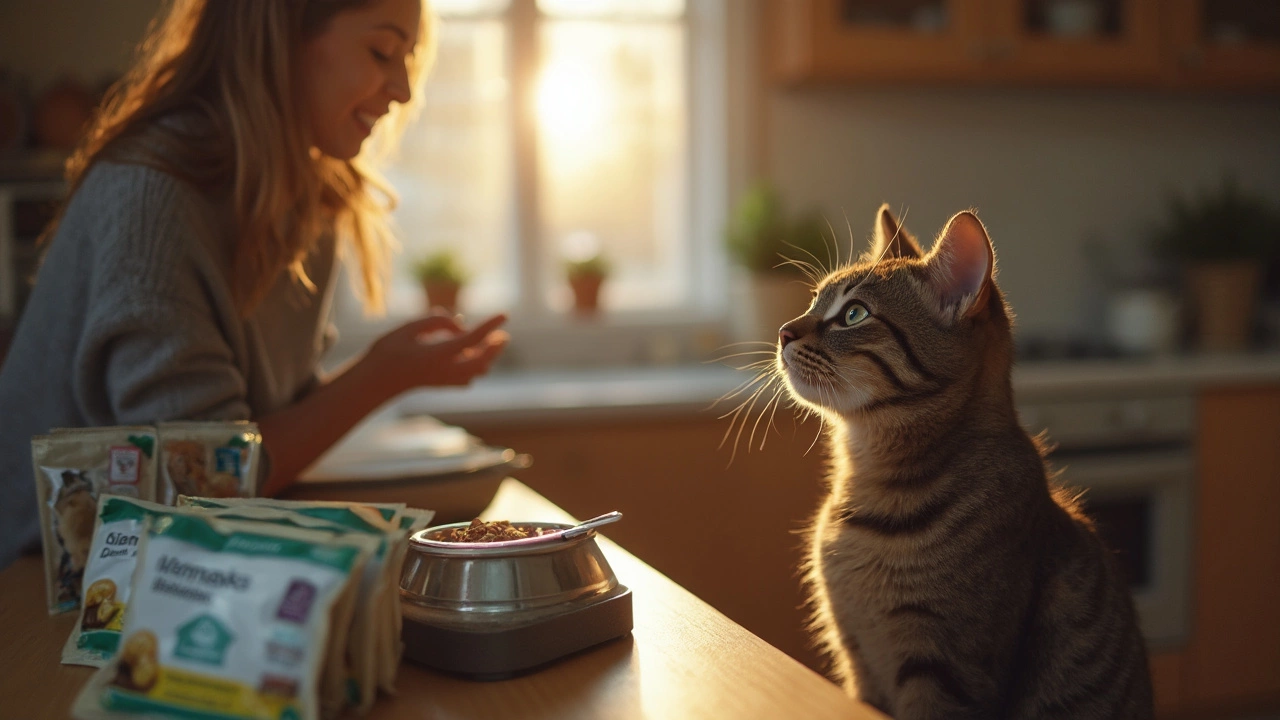Cat Feeding Guide: What Every Cat Owner Should Know
If you’ve ever wondered how many meals a day your cat really needs, you’re not alone. Cats may look picky, but the right feeding routine is simple once you know the basics. Below you’ll find straight‑forward tips on meal frequency, choosing the right food, and keeping your cat at a healthy weight.
How Often Should Cats Eat?
Adult cats generally thrive on two meals a day – one in the morning and one in the evening. This mimics a cat’s natural hunting pattern of a few larger meals rather than constant grazing. Kittens, on the other hand, need more frequent feedings – three to four times daily – because they burn energy fast and their stomachs are small.
Senior cats (7+ years) may prefer smaller, more frequent meals if they have dental issues or reduced appetite. Watch your cat’s behavior: if they’re begging between meals, consider a low‑calorie snack or a timed feeder to spread calories evenly.
Choosing the Right Food
Wet food offers moisture, which helps with kidney health and keeps cats hydrated. Aim for at least one wet meal per day, especially if your cat doesn’t drink much water. Dry kibble is convenient and helps keep teeth clean, but it shouldn’t be the sole source of nutrition.
Read the label: look for a high protein content (30%+ for adults, 35%+ for kittens) and low fillers like corn or wheat. Real meat should be the first ingredient. Avoid foods that list “by‑products” or “animal digest” too prominently – they’re often lower quality.
When switching brands, do it gradually over a week. Mix a small amount of the new food with the old, then increase the new portion each day. This prevents stomach upset and lets your cat adjust to the taste.
Portion sizes vary by age, weight, and activity level. A typical 10‑pound indoor cat needs about 200‑250 calories per day. Use the feeding guide on the package as a starting point, then adjust based on your cat’s body condition. You should be able to feel their ribs without pressing hard; if they’re too slim or too chunky, tweak the amount.
Treats should be no more than 10% of daily calories. Choose treats that list real meat and avoid those high in sugar or artificial flavors. A few kibble pieces or a small spoonful of wet food works well as a reward without overdoing it.
Don’t forget fresh water. Even cats eating wet food need water. Place bowls in multiple spots, keep them clean, and consider a pet fountain to encourage drinking.
Finally, schedule regular vet visits to monitor weight and health. Your vet can suggest specific diet tweaks if your cat has allergies, diabetes, or kidney concerns.
Feeding your cat doesn’t have to be complicated. Stick to two balanced meals for adults, choose high‑protein foods, watch portions, and keep water flowing. With these basics, your feline will stay healthy, energetic, and ready for those spontaneous pounce sessions.
- Morgan Ainsworth
- 0 Comments
How Much Wet Food Should a 10 lb Cat Eat Per Day?
Wondering how much wet food to give your 10 lb cat each day? This article cuts through the confusion and gives practical, clear answers. We'll cover the right portions, what to watch out for, and why a one-size-fits-all approach doesn't work for cats. Plus, you'll get smart feeding tips from real-world experience. Keeping your cat healthy has never been easier.
View More
